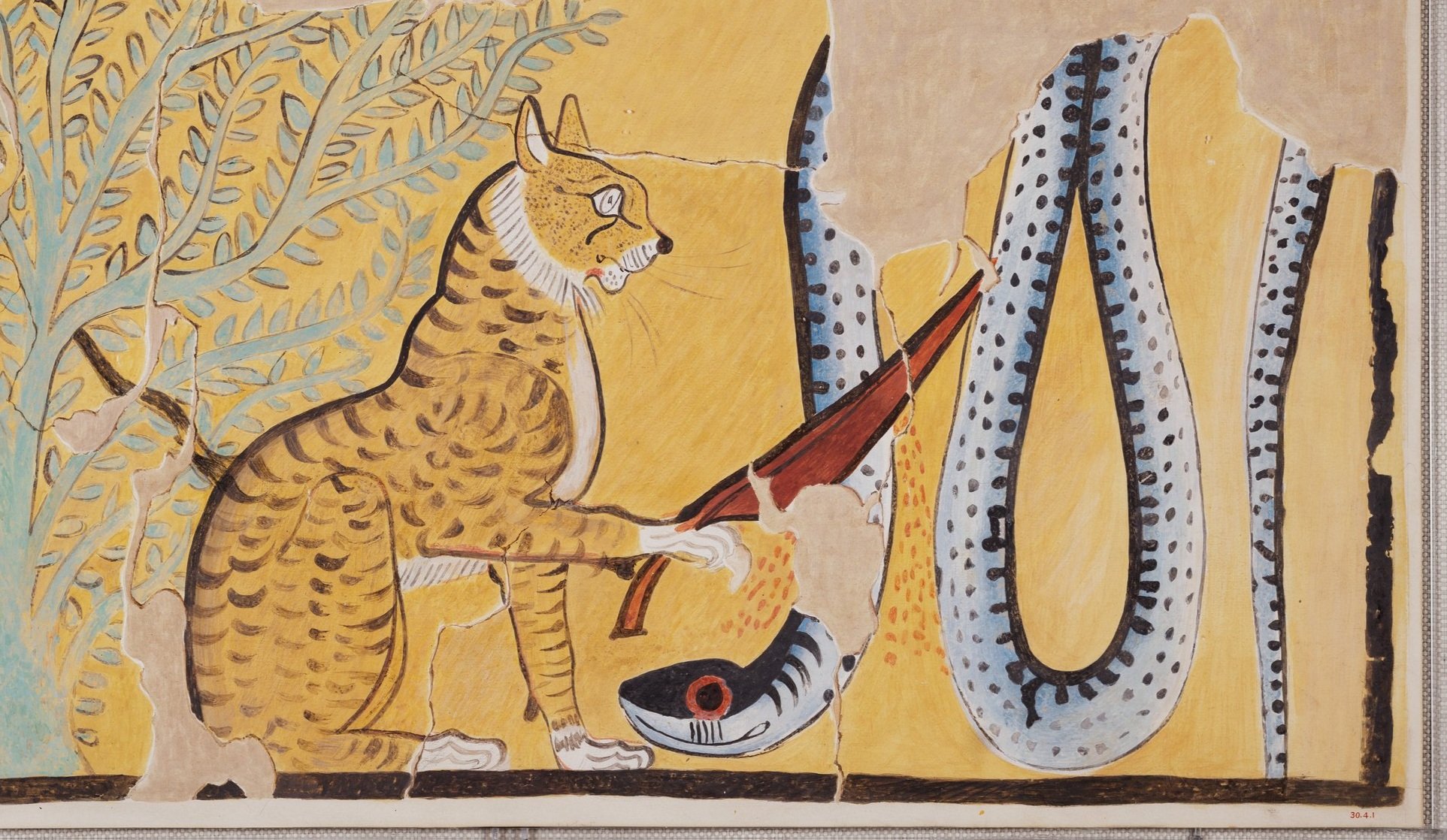
The Secret Language of the Baboons
Learn how short hieroglyphic texts demonstrate the three uses of hieroglyphic signs (phonogram, logogram, and determinative) as well as the flexibility of spelling, sign forms, and ability to create symbolic juxtapositions.

Praise to the Great Cat
The combination of an animal head with a human body is a distinctive feature of images of ancient Egyptian deities. Fully human or fully animal representations also appear. Amun, whose most common epithet in the New Kingdom is “king of the gods,” is most often shown in anthropomorphic form, although in Nubian temples he can have a ram head. The goddess Taweret, a protector of women and children, appears almost exclusively as a pregnant hippopotamus.

The Real Treasure of the Valley of the Kings
The spectacular royal tombs in the Valley of the Kings were intended to be the final resting place of the pharaohs of the New Kingdom and their (often golden) possessions. One of the smallest tombs in the valley, yet far and above the most famous, is the tomb of Tutankhamun, whose nine year reign was a footnote to history before the treasures of his burial were splashed across newspapers across the world (this, despite how interesting and significant events occurred during his short rule). As I will argue here, the greatest treasure of the Valley of the Kings is not Tutankhamun’s gold, but the hieroglyphic texts and associated images that decorate the walls of the royal tombs.
